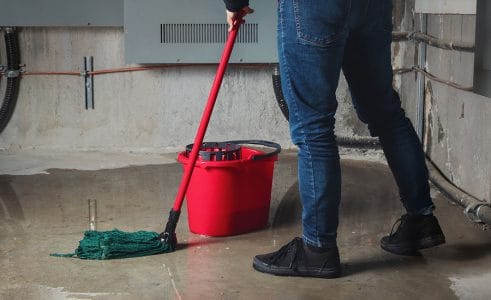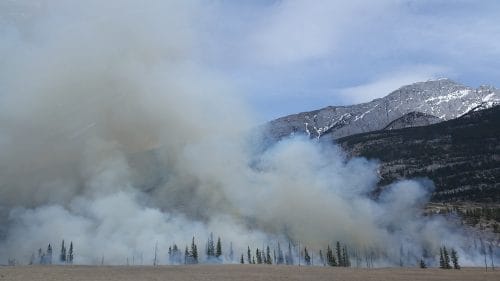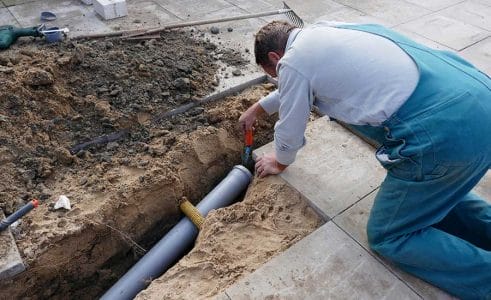Identifying Signs of Water Damage in Walls [Causes + Tips]
Did you know that water damage accounts for nearly 30% of all property damage claims in the U.S.?
Whether it’s from a burst pipe, roof leak, or rising groundwater, water damage in walls can weaken your property’s foundation, compromise its value, and lead to costly repairs.
Beyond the structural impact, moisture can create an ideal environment for mold and bacteria to thrive, putting your indoor air quality and health at risk.
In this guide, we’ll explore the causes, signs, and inspection methods for water damage in walls — along with practical solutions to protect your property.
What Is Water Damage in Walls and Why Should You Be Concerned?
Water damage in walls occurs when excess moisture penetrates and accumulates within the structural elements of your property.
Over time, water damage weakens the integrity of walls, leading to warping, cracks, and eventual structural failure.
The reason for concern comes in because indoor humidity and moisture issues, like those caused by water damage, are linked to 50% of indoor air quality problems, which pose a potential health risk.
Causes of Water Damage in Walls
Identifying the root cause of water damage in walls is not only important for the integrity of your property, but also for effective mold remediation and prevention.
Here are the most common causes:
- Plumbing leaks: Burst or leaking pipes hidden behind walls are among the most frequent culprits of water damage. Over time, even small drips can saturate drywall and lead to mold damage and growth.
- Roof damage: A damaged roof, missing shingles, or clogged gutters can allow rainwater to seep into walls, especially during heavy storms.
- Poorly sealed windows and doors: Inadequate caulking or weatherstripping around windows and doors allows rain and moisture to penetrate walls, causing long-term damage.
- Foundation cracks: Cracks in the foundation can let groundwater or surface water seep into walls, particularly in basements or ground-level areas.
- Condensation build-up: High humidity levels or poorly ventilated areas can cause condensation on walls, eventually saturating the material and fostering mold growth.
- Flooding or storm damage: Flooding from natural disasters or severe storms can saturate walls quickly, leading to extensive damage that requires immediate attention.
- Appliance malfunctions: Leaking washing machines, dishwashers, or water heaters can spill water into walls, particularly in utility rooms or kitchens.
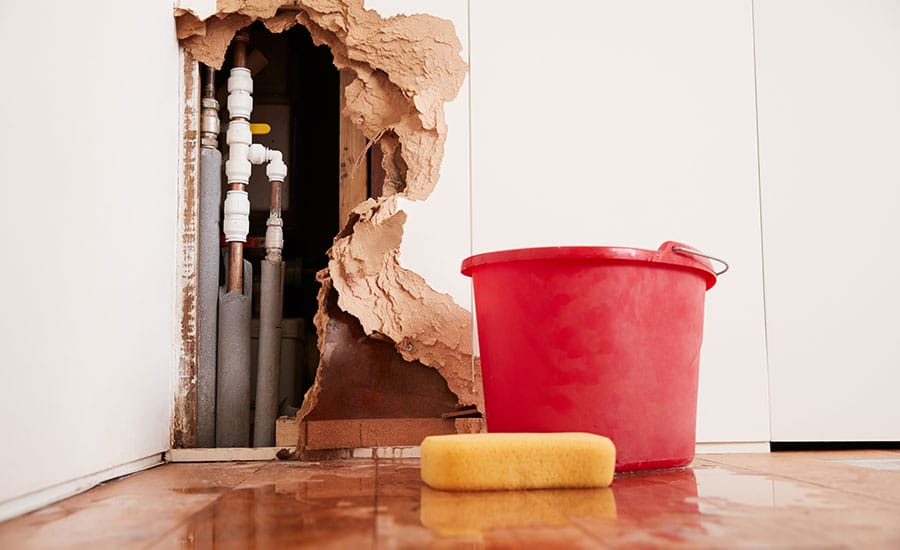
Common Signs of Water Damage in Walls
Signs of water damage in walls are not always visible immediately, but recognizing the warning signs early can save you from costly repairs and more severe structural problems.
The most common indicators of water damage are:
1. Visible Signs of Water Damage
Water damage often manifests visually, making it easier to identify in its early stages.
Look for:
- Discoloration or stains: Yellow, brown, or dark spots on walls are clear indications of moisture intrusion.
- Peeling paint or wallpaper: Moisture weakens adhesives, causing surfaces to bubble or flake.
- Warping or bulging: Walls that appear uneven or bloated may indicate trapped water.
- Efflorescence: White, chalky deposits on masonry walls are caused by water evaporating and leaving behind mineral residues.
Tip: Use a moisture meter to verify the extent of water saturation, even if the signs appear minor.
2. Structural Indicators of Hidden Water Damage
When water damage occurs within the walls, structural problems can arise, including:
- Cracks in drywall or plaster: Persistent water exposure weakens materials, causing splits or fractures.
- Sagging walls or ceilings: Excess water weight can compromise the structural integrity of your home.
- Loose or creaking baseboards: Moisture can warp wood, causing fixtures to detach or shift.
Tip: Gently tap on the wall, a hollow sound may indicate water-damaged drywall or deteriorated materials behind the surface.
3. Unusual Smells Indicating Water Damage
Water damage often creates distinct odors that shouldn’t be ignored:
- Musty or earthy smells: These odors often indicate mold or mildew growth behind the walls.
- Rotten odors: Prolonged exposure to moisture can lead to decaying materials, producing unpleasant smells.
Tip: Use a dehumidifier to reduce moisture levels and help eliminate odors while identifying the source of the damage.
4. Sounds That Suggest Water Damage Behind Walls
Sometimes water damage reveals itself through sound rather than sight:
- Dripping or trickling sounds: These noises may indicate active leaks or water traveling through the walls.
- Crackling or popping noises: This can result from water saturating and drying within structural materials.
- Buzzing sounds: In some cases, water damage may impact electrical components, causing abnormal noises.
Tip: Turn off power to the affected area and contact a professional immediately if you suspect water has infiltrated electrical wiring.
How To Inspect Your Walls for Water Damage
Inspecting your walls for water damage is an important first step in identifying potential issues and preventing costly repairs.
Follow these steps to uncover visible and hidden water damage:
1. Conduct a Visual Inspection of Wall Surfaces
Start with a detailed examination of your walls for obvious signs of water damage.
When conducting the visual inspection, you should:
- Look for discoloration: Yellow, brown, or dark stains are telltale signs of water intrusion.
- Check for bubbling or peeling paint: Moisture weakens adhesives, causing surface layers to detach.
- Examine wall texture: Warping, bulging, or sagging areas often indicate water retention within the walls.
Tip: Conduct your inspection during daylight hours or use a bright flashlight to spot subtle changes in color or texture more easily.
2. Use a Moisture Meter To Detect Hidden Water Damage
Moisture meters are invaluable for identifying water damage that isn’t visible to the naked eye.
You should:
- Select the right tool: Pin-type moisture meters are ideal for drywall, while pinless meters work well for larger surface areas.
- Measure multiple spots: Test various areas of the wall, especially near suspected leaks or visible damage.
- Interpret readings carefully: Moisture levels above 15% typically indicate water damage.
Tip: Use a thermal imaging camera with a moisture meter to identify temperature variations that could signal water leaks or pooling.
3. Check Baseboards and Corners for Signs of Moisture
The lower sections of walls are particularly vulnerable to water damage due to gravity and seepage:
- Inspect baseboards: Look for detachment, warping, or discoloration at the seams.
- Feel for dampness: Run your hand along baseboards and corners to check for cool or wet areas.
- Check adjacent flooring: Water damage often extends to floors, so watch for buckling, swelling, or unusual stains near baseboards.
Tip: Place a sheet of aluminum foil against suspect areas for 24 hours. If condensation appears on the foil, it’s a sign of trapped moisture.
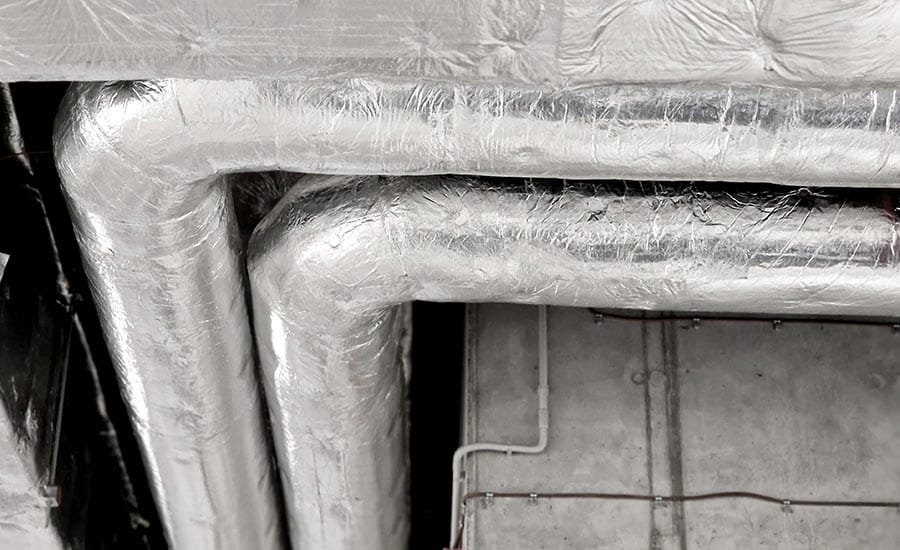
Trust BELFOR To Address and Prevent Wall Water Damage
At BELFOR, we understand how water damage in walls can compromise your property’s safety and value.
With our comprehensive services, we don’t just restore your walls — we also protect your home or business against future water-related issues.
Our trusted expertise means you can count on:
- Rapid response services: Available 24/7 to minimize damage and provide peace of mind.
- Comprehensive restoration: From moisture detection to structural repairs, we handle every step of the process.
- Industry-leading technology: Advanced tools like moisture meters and thermal imaging make sure no damage goes unnoticed.
- Expert technicians: Our trained professionals have decades of experience in addressing water damage to all types of properties.
- Preventive solutions: We provide guidance to safeguard your property from recurring water damage.
With BELFOR, you’re not just repairing walls — you’re securing your property for the future.
Contact us today to learn more about how we can help restore and protect your home or business from wall water damage.
We’re here and ready to help!
.jpg)
